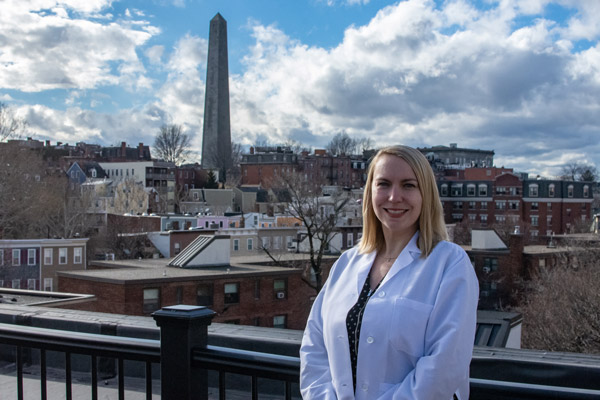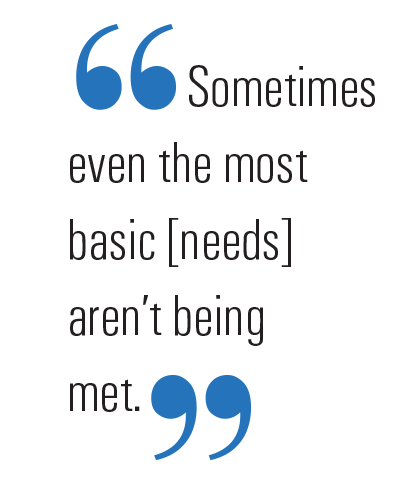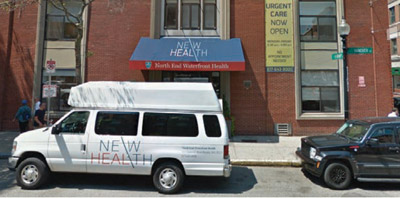

Crystal Lewandowski, OD, FAAO, grew up in Buffalo, New York, and completed her undergraduate education at State University of New York at Buffalo. “I had some familiarity of various practice settings, including my own optometrist’s private practice, a commercial location, and hospital settings, but at the time I had never been exposed to a community health center,” she says. That changed, however, as she rotated through several health centers as an optometry student at the New England College of Optometry (NECO). “I fell in love with that mode of practice,” she says, and she stayed in Boston, Massachusetts, after graduating, specifically to pursue this career path.
Dr. Lewandowski still recalls the realization that parts of the city were in true food deserts. In the neighborhood she works, Charlestown, there is only one grocery store, Whole Foods. Many families cannot afford healthy fruits and vegetables from there or
are without transportation to travel to the store. “In one section of town, there are multimillion-dollar condominiums, and just a couple of blocks away, there are government-subsidized homes with children whose only meals of the day are the ones served at school. It can be difficult to wrap your head around the disparity within just a few city blocks.”


Her health center, North End Waterfront Health (NEW Health) works diligently to address this issue. “We have a food insecurity
program that employees donate to weekly. Our nutritionist and outreach team visit the nearby elementary school twice per month to educate students about healthy meal preparation and provide a restaurant-style lunch to different classes each visit. Restaurants in the neighborhood support our efforts by donating the food given, and we’ve also built a roof deck garden at the health center to use for our program. Not only have many of these students never been to a restaurant, but some have never seen lemons or growing vegetables before,” she says.
While Boston has a large population and multiple agencies, organizations and even individuals working to make a difference in the community, there are still people this help isn’t reaching. In Massachusetts, it is estimated that more than 650,000 people are struggling with hunger—one-in-eight of whom are children, according to feeding-america.org. Given socioeconomic pressures, it’s not surprising that some families struggle to keep up with eye exam appointments or have poor compliance with medications. “It can be easy to fall back into the daily routine of examining patients, recalling those due for annual exam and analyzing no-show rates. As providers, we must remember to step back and truly think about the needs of our patients, because sometimes even the most basic
ones like food, clothing and shelter aren’t being met.”


As an assistant professor of clinical optometry at NECO and the vision director for NEW Health, Dr. Lewandowski shares this perspective with student interns. Starting on orientation day, she discusses cultural competency and health disparities, as well as
language, social and socioeconomic barriers that may be encountered with the patient population. She gives an example about a patient with chronic blepharitis seen over multiple visits with unrelenting symptoms. “He couldn’t find the recommended lid wipes as they weren’t for sale locally, and he didn’t have a smart phone or computer to buy them online. The library was unable to assist with computer usage due to a language barrier. I then coordinated with a social worker at our health center to assist with the purchase, as well as show a video from the manufacturer website demonstrating usage.”
The potential for rewards in this practice setting are terrific. “I’m able to teach and mentor students while examining patients of all ages from various backgrounds. We get to know entire families, including children and their grandparents,” she says. “Often, we see people in their 50s and 60s for their first eye exam, identifying early signs of ocular or systemic disease. We can take the time to
focus on addressing our patients’ concerns, health education and co-management with other providers in the building,” she says.



